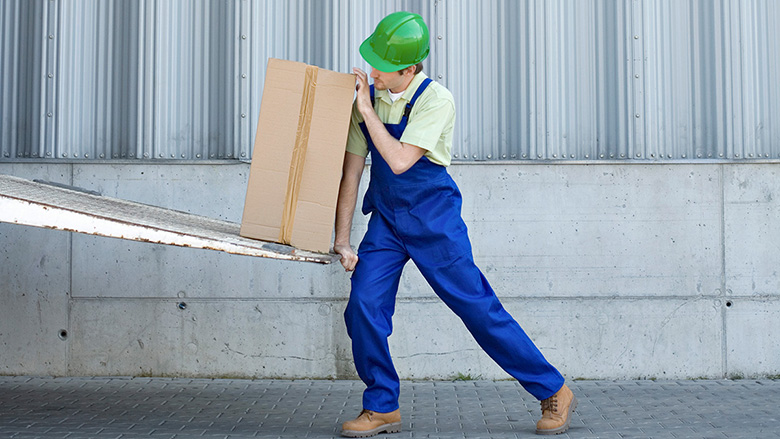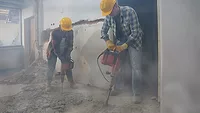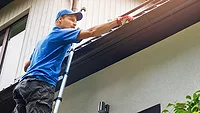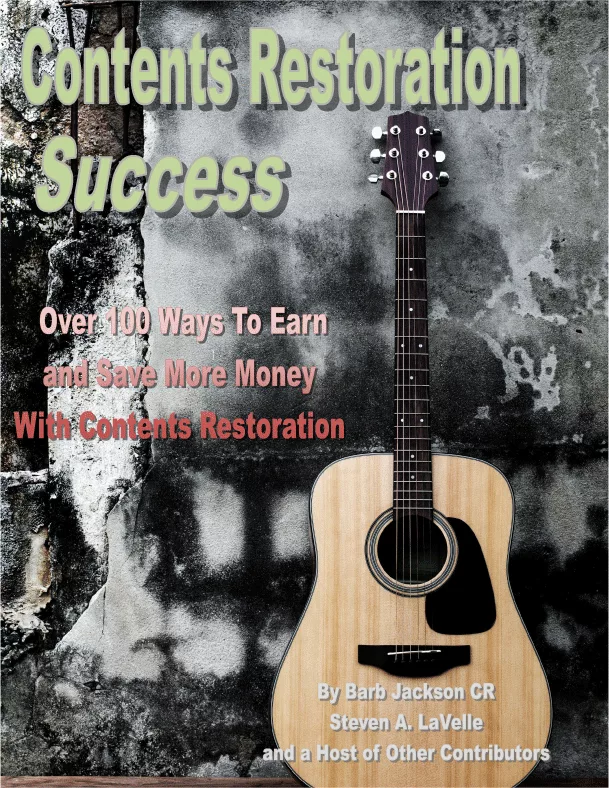What's the Most Common Injury for the Restoration Business?

Photo credit: Albina Gavrilovic / iStock / Getty Images Plus via Getty Images
I’ll tell you what I’ve seen – strains and sprains. Far and away strains and sprains. The National Safety Council backs up my observations by ranking them second in work-related injury causes. (1)
Safety professionals call them Soft Tissue Injuries (STI’s). Whatever you call them, I believe they are a result of what we do for a living. We lift equipment into vans or trucks, we move equipment into buildings, we move furniture in buildings, we shift equipment around in buildings, and then we move equipment back out of buildings. That’s just getting started with a job; other tasks can include demolition, carrying containers of liquids, and we carry many different objects up and down stairs. I think you get my point; Restorers do quite a bit of physical work. As a result, at times we strain and sprain ligaments, tissues, and muscles along the way.
But it doesn’t have to always be that way. We can perform our work smarter. In this article, I’m going to outline some common-sense preventative measures you can take to prevent strains and sprains, as well as some proactive measures.
Preventative Measures
Proper Lifting and Carrying Techniques
The basic technique of lifting with your legs and not your back should always be a starting point. However, there are many techniques that can help further. Here are a few:
- Turning with your feet and legs rather than twisting your back
- Squat down and pull an object close to you before lifting
- Keep objects held against your body while lifting and carrying
- Don’t reach for or place objects above your shoulders or head
I really like a document created by Kent County, Delaware that reviews these techniques and has excellent images showing strain danger zones and “Lifting Do’s & Don’ts”. Check out the link I provided to this document in the Resources section at the end of this article.
Avoid repetitive and awkward positions
Performing repetitive lifts or moves during an entire work day is not working smarter. It exposes your body to unneeded fatigue and potential injury. When you recognize repetitive activities, take a moment to find a better way to accomplish the tasks. For instance, if you are carrying objects repetitively then use a cart or dolly to reduce the strain on your body. If you are lifting objects repetitively, get help from somebody or use a mechanical device to do the lifting (e.g. pallet jack, forklift, etc.).
Use Mechanical Aids
If you’re not sure what could be used to help reduce lifting and moving items, take a look at what moving companies are using these days. I was recently at my parent’s house when they had a moving company move their household to a smaller condo and I was amazed at how simple it was. They use many different techniques, a few examples are:
- Boxing small, loose items
- Wrapping awkward items with blankets and taping them
- Using dollies for almost everything
- Using rollers to place large objects on
It took a few minutes to box, wrap, or place items on dollies/rollers, but the end result was much less strain lifting and really quick movement out of the house.
Use Liftgates
If there is one mechanical aid I have seen Restoration Companies consistently ignore it’s a liftgate on a truck or van. Likewise, for the Companies I have seen install and use liftgates, the response has been universal – less strain on the technicians and less injuries. Taking a hint from the moving and trucking industry, a liftgate is a capital investment that pays off quickly. This is further supported by looking at the weight of Restoration Industry equipment. It’s not uncommon for dehumidifiers to weigh 80 or 90 pounds. Why not have a technician wheel two dehu’s onto a liftgate and load them into a truck or van? The process will be repeated (and injuries avoided) again when moving into a building and then when removing from a building. The reduction of risk increases many times over during the average work week.

Introducing the Industrial Athlete
When you start talking about strains, sprains, and soft tissue injuries, we are talking about the performance of the human body. Whenever I think about human performance, I think of athletes. In our case, we have Industrial Athletes. I first heard the term Industrial Athlete a few years back and it immediately made sense to me. Since then, my eyes have been opened on how this applies. This is another huge, untapped concept that the Restoration Industry is not using but other industries have adopted and now embrace. There are many resources available to help you start down this path; you can start by going to the Resources section at the end of this article and selecting the provided link. I think it will open your eyes.
Training to Reinforce Concepts
Every good habit or skill must be reinforced, otherwise we forget it. That includes all the topics mentioned in this article. In fact, if you glance over them, you will find many topics that can be used in training and everyday awareness. These topics don’t need to be complex or take a long time. Pick one topic, pull some information off the Internet from a reputable source, and review it.
Summary
I have observed all of the measures mentioned in this article decrease strains and sprains. The result is less impact to a company’s most valuable resource; employees. There are many business benefits that follow after that; reduced cost of medical treatment and worker’s comp insurance, decreased employee ‘down time’, increased efficiency, and increased overall employee motivation by not having a fear of being injured. I challenge your Restoration Company to begin adopting and implementing these measures – I think the benefits will be a pleasant surprise!
Resources:
Safe Lifting Techniques Can Save Your Back! Kent County, Delaware. https://co.kent.de.us/media/1019631/0321safetySAFElifting.pdf
How to Prevent Sprains and Strains in the Workplace, Mark Middlesworth, July 2, 2014, The Society for Human Resource Management. https://www.shrm.org/resourcesandtools/hr-topics/risk-management/pages/prevent-sprains-strains-workplace.aspx
Sprains and Strains Prevention Toolbox Safety Talk, The National Workzone Safety Information Clearinghouse. https://workzonesafety-media.s3.amazonaws.com/workzonesafety/files/documents/training/toolbox_talks/osha_alliance/sprains_strains_prevention.pdf
What Is An Industrial Athlete? Kimber DiVincenzo. Work-Fit.com. https://www.work-fit.com/blog/what-is-an-industrial-athlete
References:
1. Top Work-related Injury Causes, National Safety Council. https://injuryfacts.nsc.org/work/work-overview/top-work-related-injury-causes/
Looking for a reprint of this article?
From high-res PDFs to custom plaques, order your copy today!









